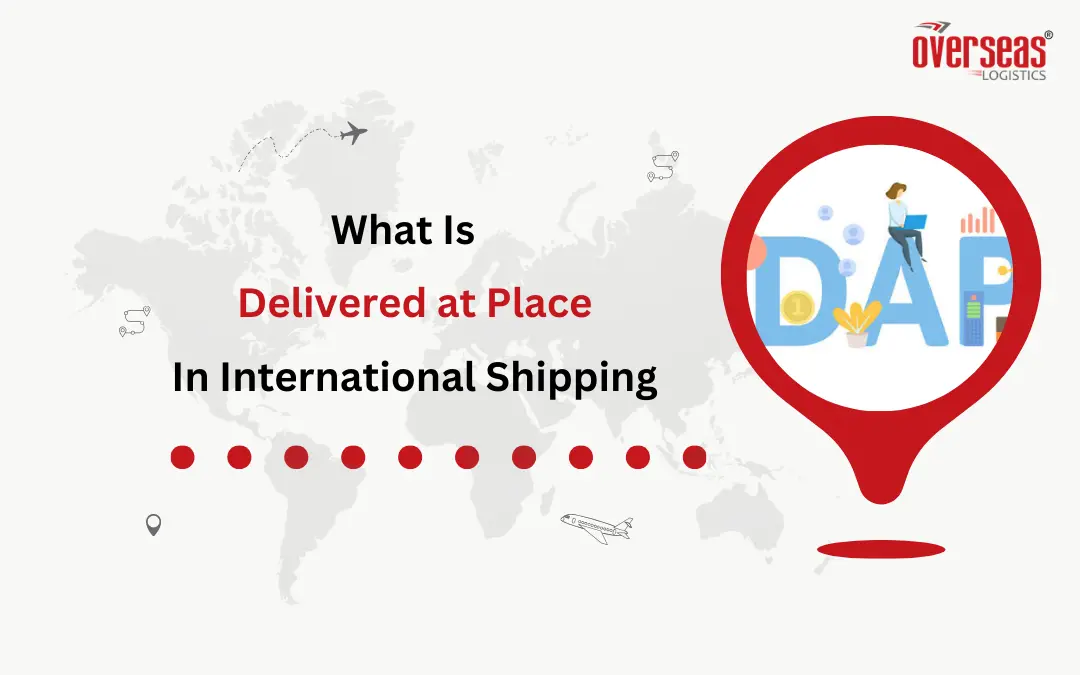In the intricate world of international shipping, DAP, or “Delivered at Place,” stands as a beacon of clarity for both sellers and buyers. This Incoterm dictates that the seller assumes all costs and risks until the goods reach the agreed-upon destination, often the buyer’s premises. In this exploration, we dissect the nuances of DAP, replacing the retired Incoterms DAF, DES, and DDU.
Understanding DAP: Unveiling Responsibilities
Seller’s Duties under DAP
Export Packaging: Prepare the cargo for export, ensuring it meets international courier standards.
Loading Charges: Cover costs related to loading the cargo onto the truck at the seller’s warehouse.
Delivery to Port/Place: Manage trucking or delivery fees for transporting the cargo to the port or place of export.
Export Duty, Taxes & Customs Clearance: Handle all costs and responsibilities associated with exporting the cargo, complying with customs regulations.
Origin Terminal Handling Charges (OTHC): Bear charges related to handling at the origin terminal.
Loading on Carriage: Cover all expenses to load the cargo onto the chosen mode of carriage.
Freight Charges: Pay shipping costs for transporting the cargo to the buyer’s destination.
Destination Terminal Handling Charges (DTHC): Bear charges for handling at the destination terminal.
Delivery to Destination: Ensure the final journey of trucking the load from the destination port to the buyer’s endpoint.
Buyer’s Obligations under DAP
Unloading at Destination: Take responsibility for unloading the cargo at the final destination, typically a warehouse.
Import Duty, Taxes & Customs Clearance: Cover all importation costs, including duties and taxes. Manage customs clearance expenses.
Advantages and Disadvantages for the Buyer
Advantages:
Clear Cost Allocation: Buyers benefit from a clear delineation of responsibilities, with the seller shouldering risks until goods are available.
Minimal Liability: DAP minimizes the buyer’s risk, offering a widespread agreement to place shipping risk on the seller.
Cash Flow Management: Enables effective cash flow and inventory management, particularly for routinely reordered, expensive items.
Disadvantages:
Potential Delays: Customs clearance before reaching the buyer’s destination may lead to delays and incurring costs.
Higher Overall Costs: Costs may be higher compared to relying on a buyer’s third-party logistics or freight forwarder.
Seller’s Risk: Sellers face risks, especially with new buyers, as refusal to pay import duties poses a significant threat.
When to Opt for a DAP Agreement
DAP offers versatility, benefiting both buyers and sellers. Consider DAP in the following scenarios:
New Importers: Minimizes risks for newer importers, though at potentially higher costs.
Cash Flow Enhancement: Appeals to experienced importers aiming to enhance cash flow, especially when products require routine reordering.
Creative Logistics Solutions: Enables creative logistics solutions, like shipping to a bonded warehouse or consolidating shipments for multiple countries.
FAQs
What is the difference between DAP and DDP?
DAP: The buyer is responsible for import duty, taxes, and customs clearance.
DDP: The seller covers all importation costs, including duty, taxes, and customs clearance.
What is the difference between DAP and CIF?
DAP: Buyer pays only unloading fees, import duty, taxes, and customs clearance. The seller covers other costs.
CIF: The seller pays freight charges and must insure the shipment. Buyer covers destination charges, local delivery, unloading, and import duties.
Who pays DAP freight?
Seller: Under DAP Incoterm, the seller bears all freight charges. The buyer is only responsible for import and unloading costs.
In summary, DAP Incoterms provides a transparent framework, allowing businesses to navigate international trade intricacies with clarity. Whether you’re a new importer seeking reduced risk or an experienced player aiming for cash flow efficiency, understanding and leveraging DAP can be a game-changer in the dynamic landscape of global logistics.

